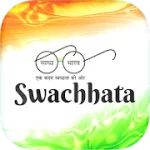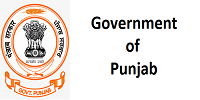HISTORY OF JALANDHAR
ABOUT JALANDHAR
The Municipal Committee Jalandhar was created in 1867 and raised Class – I in 1950 under the Punjab Municipal Act, 1911. Under the Punjab Municipal Corporation Act, 1976, it was further elevated to Municipal Corporation by Punjab Government on 5 July 1977.
Jalandhar is the third largest city of Punjab with a long history connected with a number of interesting episodes. There are several mythological stories regarding the founding of Jalandhar. It is described in Padam Purana that the city was named after the ” Daetya King ” JALANDHAR who was the son of the ocean. It is said in an another story that the King Jalandhar had opposed the colonisation of Bist Doaba and Lord Vishnu killed him and established settlement of Jalandhar township on his back.
In the available written history, the name of Jalandhar appears in the period of King Kanishka. It is described that King Kanishka had called a meeting of religious leaders of different sects at Jalandhar in order to collect all the sacred writings of Lord Buddha. It was 100 A.D.
Jalandhar city has the honour of initiating Nath movement in Eighth century and the foundation stone was laid by Jalandhar Nath the legendary jogi. The historian and traveler from China Mr. Hune Sang Has also mentioned the name of Jalandhar city in his writings.
Jalandhar city became Capital of Katoch Sardars in 1179. Than the city was captured by Ibrahim Shah and later on in 1422-42 a powerful Rajpoot Sardar attacked Jalandhar times and again. It remained capital of Northern Province of Mughal kingdom for long time.
When Ahmed Shah Abdali destroyed Kartarpur in 1756 then Baba Wadbhag Singh of Kartarpur at the instigation of Mughal governor Adeena Beg attacked and ruined the city and the Afgans living in Basties of Jalandhar were murdered. In 1766 Jalandhar city fall into the hands of Sardar Kushhaal Singh Faizalpuria Missal. The son of Sardar Kushhaal Singh Sardar Budh Singh constructed a fort made of stones in the city. Now this place is known as Kot Kishan Chand. Another some other Sikhs sardars had also constructed some small forts with mud bricks. In 1811 the city was incorporated into the kingdom of Maharaja Ranjit Singh. Till the time of its merger into English rule Jalandhar remained capital of Doaba Rayasats of Lahor Kingdom. After that it become head office of the commissioner of British rulers.
- ORIGIN OF THE NAME OF THE DISTRICT
- JALANDHAR – A CITY OF BASTIES, KOTS & GATES
- LOCATION
- ADMINISTRATIVE DIVISION OF THE DISTRICT
- RAINFALL
WEATHER
INDUSTRY IN JALANDHAR
Jalandhar ranks second in India in the rate of urbanization and has the highest density of population at 598 persons per square km, as per the 1991 census. The reason for this is growing industrialization. Industrial production of sports goods began on a small scale during the late forties. Over the years, the sports goods industry has grown at an impressive rate and of late Indian sports goods are also exported to different countries.
Most of India’s sports goods are exported to the United Kingdom, The United States of America, Germany, France and Australia. Rough estimates suggest that today Jalandhar has more than one hundred major industries and about 20,000 small-scale industries with a most conservative estimate of an annual turnover of approximately Rs 450 crores The industry is mainly concentrated in Jalandhar and Meerut. The Indian sports goods industry manufactures 318 items. The Indian sports goods industry is a highly labour intensive industry which provides employment to the weaker sections of society and also employs a large number of women. The sports goods industry in India has witnessed a phenomenal growth over the past five decades and now occupies a place of prominence in the Indian economy in view of its massive potential for employment, growth and export.
- SPORTS GOOD INDUSTRY
- HAND TOOLS INDUSTRY
- AUTO PARTS INDUSTRY
- RUBBER GOODS INDUSTRY
- SURGICAL INSTRUMENTS
LANGUAGE AND LITERATURE
The spoken language in Jalandhar is Punjabi being the mother tongue of Punjabi people. The Jalandhar falls in Doaba region, comprising the districts Jalandhar, Hoshiarpur and Kapurthala. Doaba region is sided by the rivers Beas and Sutlej. The dilect of this region is called Doabi by the linguistics. People give stress on ‘B’ in place of V. But with the spread of communication means the difference is eliminating very fast.
Since, the Jalandhar city is the house of printing press, the writers flocked to Jalandhar from all over the Punjab and many of them settled here and wrote great books. These writers wrote about the deep agonies of partition of 1947. The cruelties done during those times, the problems of migrants from Pakistan, the short stories novels, plays and poems deal with the subject of human crisis created with the partition. These books or some selections from these books were later on prescribed for school and college syllabuses. This gave inspiration to many young writers. The writers write Punjabi in Gurmukhi script. Kartar Singh Duggal a great writer of Punjabi literature brought All India Radio to Jalandhar.
FAIR AND FESTIVALS
Jalandhar is one of the ancient India Cities. Which find itself even in the Indian Epic-The Mahabharata. It is situated in the fertile Doaba region of Punjab between the two rivers the Beas and the Sutluj. The City is famous since Mughal Empire as Noor Jahan was brought up here.
During the partition of the country, the large number of migrants came to Jalandhar and settled here. Since, then the city has assumed greater importance and developed into an industrial city, excelling in the manufacture of sports goods, surgical equipment and other allied goods. Jalandhar is also famous for its publishing houses and nearly 18 vernacular dailies are published in Punjabi, Hindi and Urdu.
It has been the capital during Sikh rule under Maharaja Ranjit Singh. It is the third largest city (Area 100 Sq KM) in Punjab after Amritsar and Ludhiana and has developed either side of old G.T. Road. The city is connected by road and rail to all the important cities in India.
The fairs are a living symbol of our cultural life. The gay and vivacious Punjabis are very fond of fair or a festival. People of all communities come to participate in these fairs from far flung areas. The most notable event in Jalandhar is the annual national Harbhallabh Fair :-
KNOWN AS A NURSERY OF INDIAN HOCKEY
A tiny village called Sansarpur on the outskirts of Jalandhar has represented four of the five Continents in International Hockey produced 14 Olympians and also has the World’s highest per capita Olympic Medals. From 1932 till 2000 this village produced 14 Olympians including who played in the 1968 Olympic Game. 5 of them, Balbir Sigh (Punjab Police), Jagjit Singh, Balbir Singh (Services), Tarsem Singh and Ajit Pal Singh played for India and the remaining two, Hardyal Singh and Jagjit Singh Played for Kenya. Jalandhar is proud to have 7 players played in the same Olympic games representing two different Nation and Continents, this have not ever been repeated in the history of the Olympic games.











